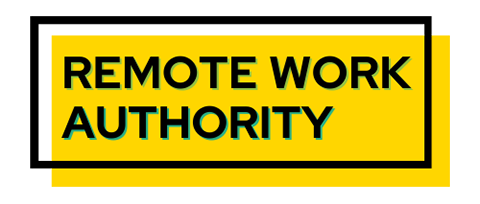Leaders who trust their team to deliver on a project instill a sense of confidence in workers that empowers them as they do the best job possible. This type of trust-based leadership is important in remote workers, but sadly, many bosses resort to micromanagement rather than trust.
Bosses delegate work to employees hired for their skills and experience, yet often do not trust that they will do the task right. In a traditional work setup, where bosses work in close proximity to their employees, they can monitor overall progress and individual performance. Even in a highly micromanaged office, some employees still goof off, and project results are not always as desired. The overwhelming principle that controls work location is presentism.
Under this policy, employers place the greatest value on being physically present in the workplace. Showing up for work on time and being there even when sick or coping with personal problems is viewed more highly than productivity. Those who show up early and stay late, regardless of output, are similarly valued.
During the pandemic, when many employees worked remotely, distance posed new challenges, particularly in the area of trust. It was apparent that trust-based leadership was lacking in many companies.

The State Of Trust In The Workplace
An international survey Work Rebalanced done in July 2022 of 900 business leaders and 1800 employees in the US, the UK, Australia, France, Germany, Japan, Mexico, and the Netherlands revealed some interesting results:
- 67% of employers trusted their workers
- 50% didn’t think employees worked this hard when they were out of sight; the figures rose to 70% in the financial services sector
- Nearly 50% installed monitoring software on employee computers, while 32% more were planning to do it
- Over 50% of employers were having problems with employee retention
Meanwhile, in the same survey, 57% of hybrid workers, 41% of office workers, and 42% of remote workers trusted their employers. Sixty-three percent considered their employer a good place to work. Those who felt their managers trusted them felt more positive about the company.
A study, also done in 2022 in the UK, notes that remote work incorporates a digital form of presentism. Aside from monitoring software, bosses value those who respond to emails and messages any time of the day and appreciate those who work longer. Before the pandemic, 80% of respondents said presentism was a dominant philosophy in their workplace. After returning to Work, the same attitudes prevail.
A New Type Of Leadership
Effective leaders are not dictators.
Being the type of boss who trusts workers rather than controlling them requires practicing a type of leadership based on trust. Coach Svetlana Whitener, writing in Forbes, notes that people at all levels of an organization can exhibit controlling personalities. The danger is that control is limiting.
A person obsessed with control can get so wrapped up in detail that they often don’t see the whole picture and miss opportunities to influence others rather than issuing orders. In contrast, those exerting trust-based leadership confidently delegate some responsibilities to others, which empowers all parties.

Becoming a trust-based leader is not always easy. The desire to control others often develops from prior experiences starting in early childhood. As a reaction to “betrayal, alienation or stifling discipline as a child, the frequent result is a need to make the world more predictable and stable, and thusly safer,” according to Whitener. Alas, the control is an illusion that often has an unintended effect on others. Not making them feel trusted results in anxiety and psychological distress that results in lower performance and reluctance to take risks.
Trusting others is hard for many people, whether they are bosses or employees with no management duties. Some personalities are automatic trusters who trust others until they find a reason not to, while others are evidence-based trusters whose first instinct is to distrust others until they earn their trust. Trust extends to both professional competence and personal integrity.
How can leaders, even those who are not natural trusters, become trust-based leaders? How can trust-challenged employees accept direction and work well with teammates? Transitioning into this type of leader or team member requires relinquishing control and becoming more vulnerable to the actions of others. It is a matter, Whitener says, of “enhancing and honing your emotional intelligence (EI)” or emotional quotient (EQ.)
Developing Emotional Intelligence
Mental Health America notes five steps involved in developing EI or EQ.
Self-Awareness
Being honest with yourself can help you realize that you are overly controlling in work and personal situations. There are times when “something must be done,” but it doesn’t have to be you leading the charge.

Self-Regulation
After realizing you are too controlling, you must take steps to trust others. Often, this means delegating tasks without micromanaging their completion.
Motivation
Freeing yourself of the responsibility to be in control of every situation can reduce your anxiety and help you see the strengths and weaknesses of other team members.
Empathy
Not only will learning to trust others empower them to be more vital members of your team, but it may also prevent making impulsive decisions and increase your understanding of how others act. You may find your own emotions are coloring your vision and your decisions.
Social Skills
As you increase EI or EQ, you should be able to pick up on nonverbal signs others give you, as well as hear what they are saying. You can work on your own communication to make sure that you are stating your point clearly and responding to others.

3 Quick Steps To Prepare For Trust-based Leadership
Whitener defines three main steps to the process:
Be honest with yourself. Are you overly controlling in a particular situation?
Ask for help. A friend or partner might point out your control issues In personal relationships, while a mentor or superior might do so in business. If you realize you have serious trust issues, you might reach out to a mental health professional.
Start trusting. You can do this by delegating tasks and evaluating the results. If you like what you see, you can delegate more. If not, you should assess whether you communicated your request clearly and whether your staff had the proper training to follow through. Over time, you will spend less time supervising and have more time for other aspects of your job. Trusted employees will grow in the process.
A move away from control and micromanagement is crucial for keeping employees happy and satisfied. It is necessary for employers who implement programs for remote and hybrid Work. Lack of trust leads bosses to install software to monitor time and productivity and be unsympathetic to worker requests for flexibility and options to work outside the office. It makes employees more suspicious of justifiable attempts to collect data and information about hours worked for payroll.
Trust-based leadership is the wave of the future for companies that want empowered, productive workers wherever they are based.


